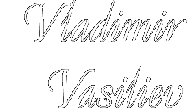 |
|
|
Simple enumeration of what was done for the five years will show the way the Bolshoi went from one economic and political system under which it lived for decades to absolutely new, different one.
THE BASICAL REFORM was held in the Bolshoi by transferring all the artists and staff of the Bolshoi to work under a contract system. This meant no more dictatorship, clear understanding of the rights and responsibilities of all the sides. And it also helped to raise the fees and salaries of the Bolshoi artists and employees significantly. No single artist had left the Bolshoi since then. REPERTOIRE For the first time the Bolshoi repertoire was made much in advance: now the performances schedule was made in spring for the whole next season, whereas earlier it was made only for a month ahead. The "communist" idea of chief ballet masters, conductors, directors, designers was abandoned. Instead, each artistic division of the company was headed and managed by its artistic director being responsible for the highest quality and level of each artist and performance. And new productions were made by those masters from everywhere invited and approved by the Artistic Board of Directors. The diversity of names in the Bolshoi in the 16 new opera productions and 14 new ballet productions for these five years spoke for itself: Mstislav Rostropovich, Oleg Sheintsis, Peter Ustinov, George Balanchine, Jerome Robbins, Pierre Lacotte, Alexey Ratmansky, Mikhail Kisliarov, etc. The composers composed music on the order of the Bolshoi Theatre (thus, opera "The Captain's Daughter" was composed by Kollontay-Ermolaev). PROMOTION AND PRESS The system of promotion and work with press was created in the Bolshoi. The official Website of the Bolshoi (www.bolshoi.ru) appeared in Internet. Publishing of the promotional materials of the Bolshoi was changed and enlarged significantly, new issues as the new beautiful BOLSHOI magazine, repertoire book for the season, press booklets and leaflets appeared in the Bolshoi. Vladimir Vasiliev founded a professional videostudio in the Bolshoi and it launched a weekly TV program which was called "Entrance 15" (which is the artists' entrance in the Bolshoi). This program presented the news, artists, new names and productions of the Bolshoi. Fifty such programs were shown on the Russian TV. The video studio was also negotiating and organizing live broadcasting of the Bolshoi performances with the Russsian TV channels and was responsible for all archive recordings. SPONSORSHIP and FUNDRAISING: In new economic circumstances the Bolshoi had to find its new methods and system how to manage to enlarge the repertoire, to keep the greatest artists in the Company and to develop in all the other directions. During those five years many productions appeared in the Bolshoi with the help of the sponsors: ballets "Taming of the Shrewd", "Swan Lake", "Giselle", "Dreams about Japan", Balanchine's triple bill, opera "Love for the Three Oranges", etc. A new association called the Club of the BOLSHOI FRIENDS was established in Moscow. This was meant to be an international organization to help the Bolshoi work and develop artistically. With the help of this organization the large scale tour of the Bolshoi opera and ballet companies in London was held in 1999, the first ever charity New Year Ball was organized in the Bolshoi, some concerts and special galas were held. RECONSTRUCTION OF THE BOLSHOI In September 1995 the first stone was laid into the construction of the Bolshoi sister theatre next to the Bolshoi itself (which was to become a home for the Bolshoi Company during the reconstruction of the main building itself) by the Mayor of Moscow Mr. Yuri Luzhkov and Mr. Vladimir Vasiliev. Since then, continuous hard work was held to attract the government's and possible donators' attention to the problems of the reconstruction's uninterrupted financing. For these purposes the theatre tried to turn for help of UNESCO. As a result the General Director of UNESCO F.Mayor and Mr. V.Vasiliev launched an international fundraising campaign for the Bolshoi reconstruction and founded its Steering Committee. On request of this Steering Committee the international auditing company "Arthur Andersen" held a thorough auditing check of the Bolshoi's activities to make the Bolshoi more "transparent". The Committee also held some meetings in Moscow. Unfortunately, this did not result in any considerable sums coming up to rescue the Bolshoi building. As for the conception of the reconstruction, Vasiliev pointed out many times, that theatre was not a museum exhibit, and the main thing in it was its soul - the Company and the artistic, creative work of it. That is why, it is important to preserve the historical "face" of the Bolshoi, i.e. its exterior and the auditorium, making it more comfortable for the audience (conditioning system, improving corridors on the upper levels of the auditorium, wardrobes, buffets, toilets, building special facilities for the invalids, parkings for cars, etc.). At the same time the stage equipment and "behind the stage" area, which is always closed for the audience and is a living place for the artists, should be considerably rebuilt and rearranged in accordance with new demands of modern productions and modern conveniences. As far as the money being subsidized to the Bolshoi reconstruction, Vasiliev had nothing to do with that both as the Bolshoi director and as a private person. As this was always a matter of the government of Russia and Moscow. |
